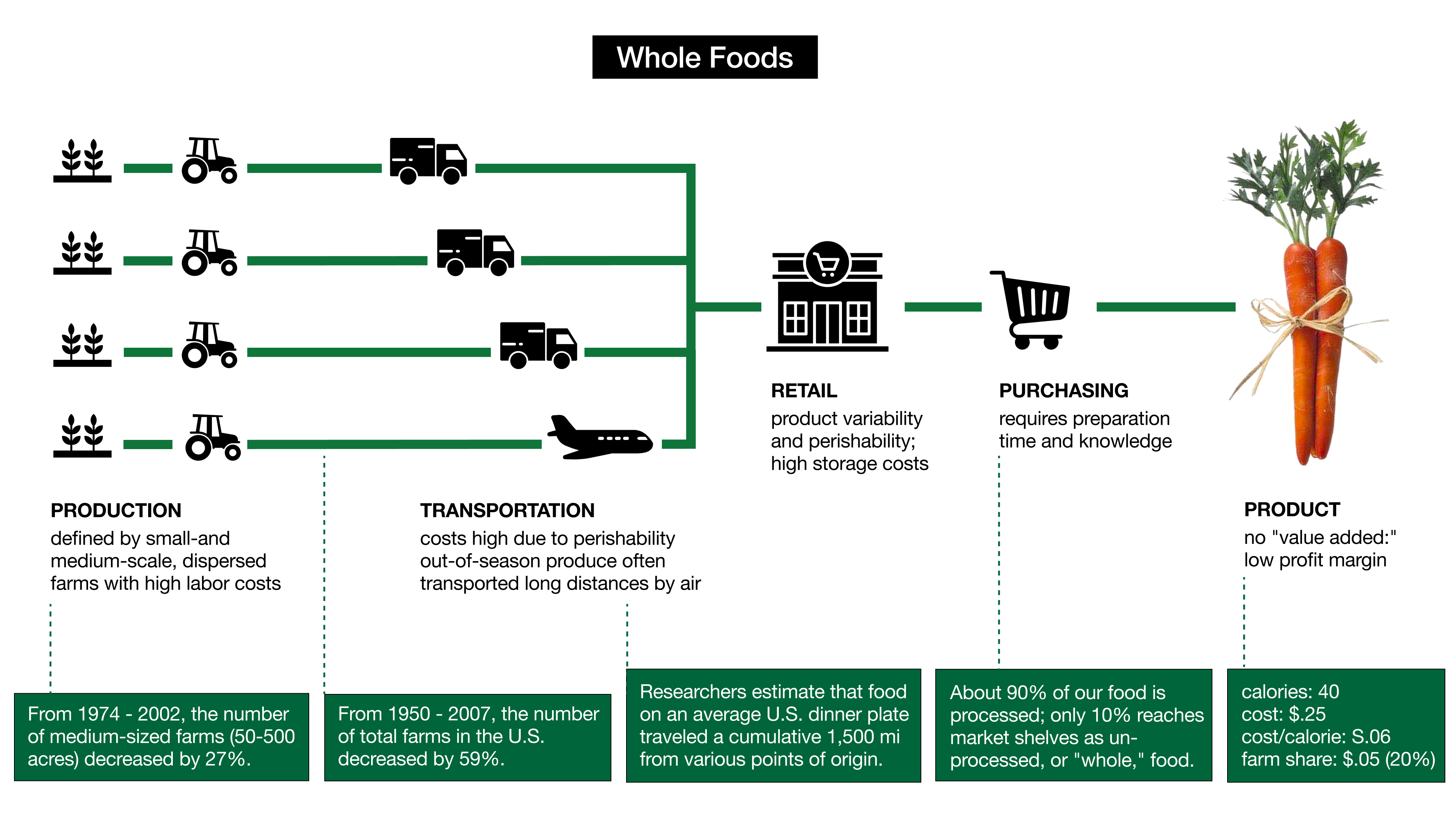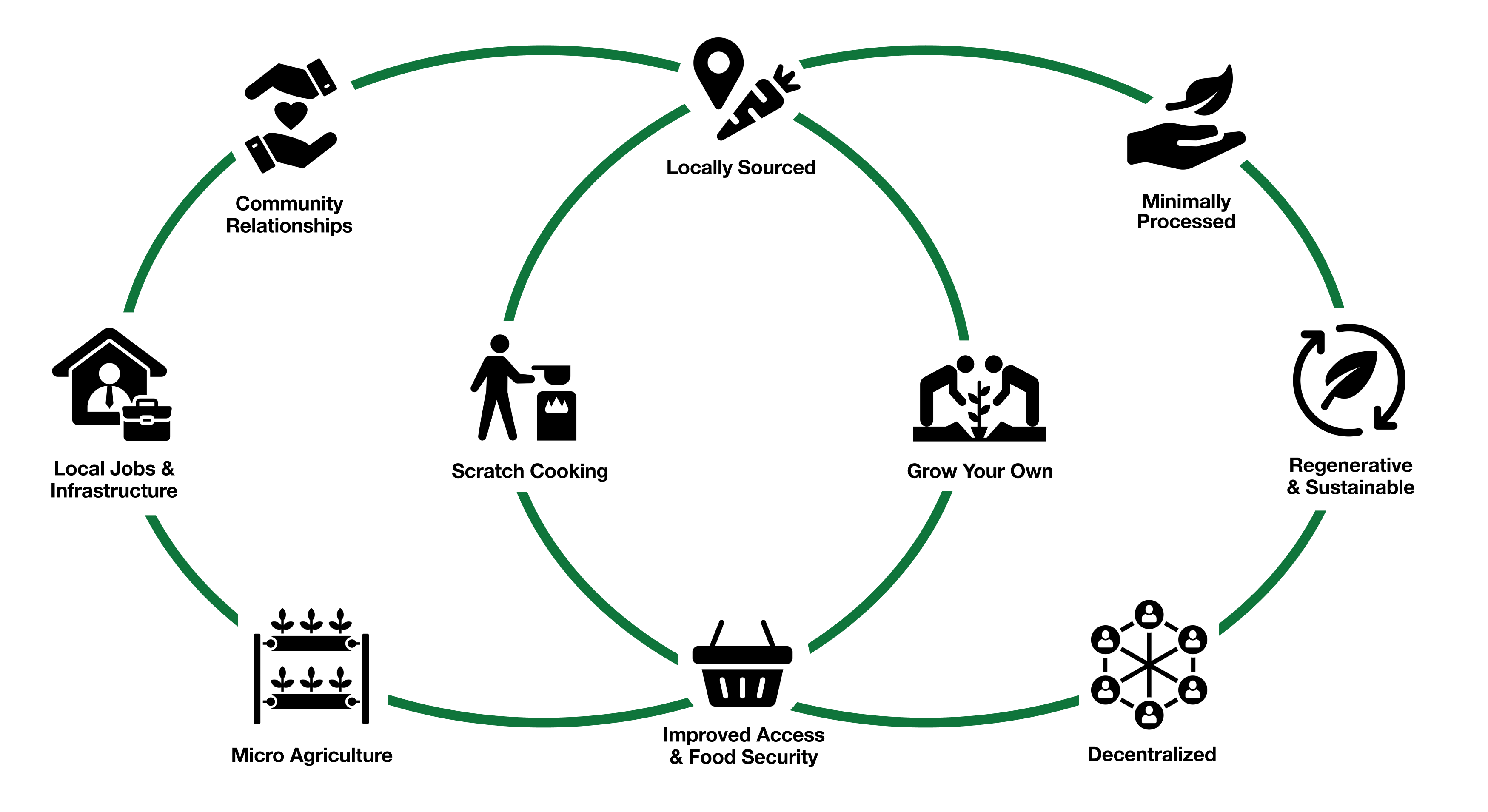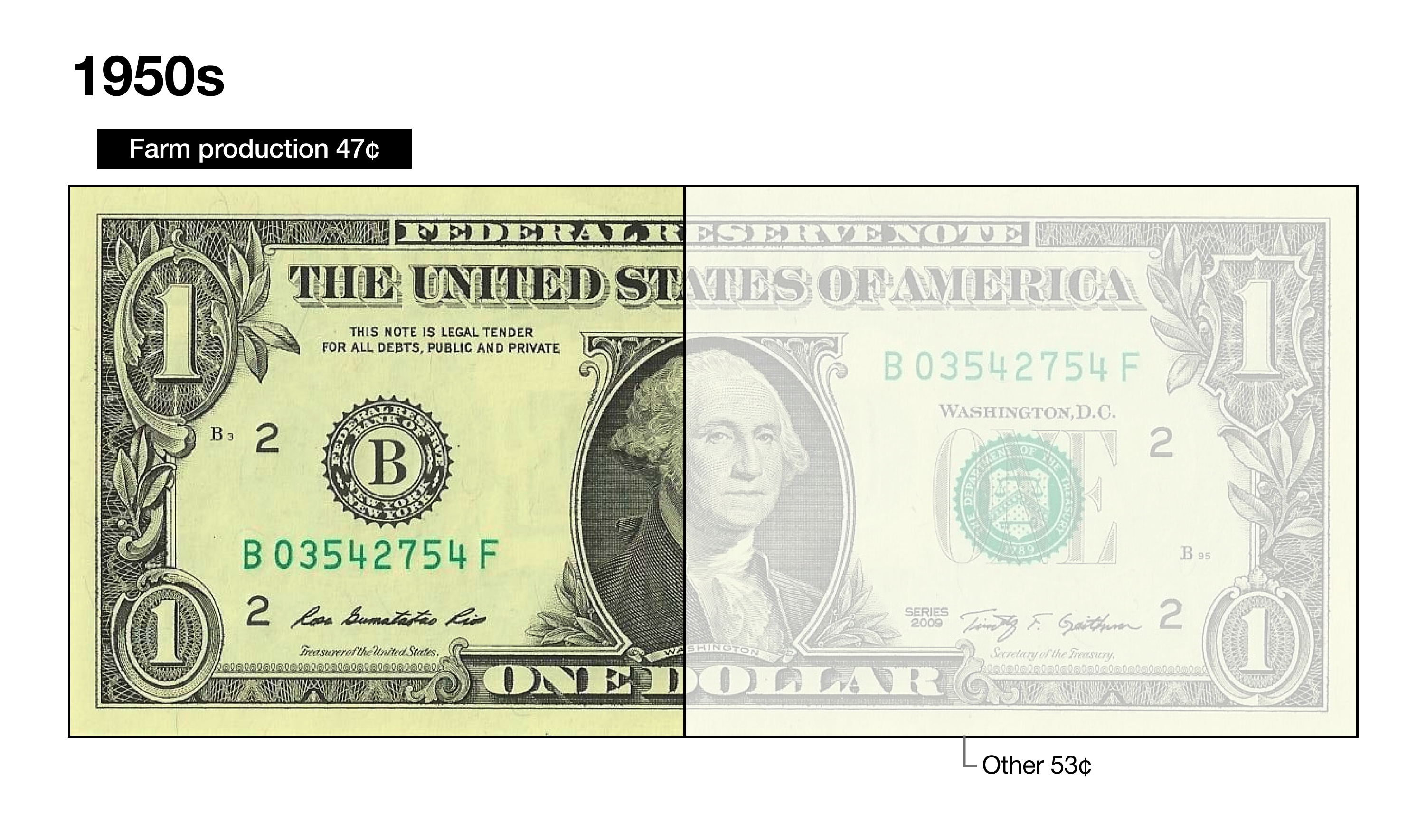︎︎︎BACK
The Evolution of Our Modern Food System
100 Years Ago

Supply Chains in food started out in local communities. Food couldn’t be stored for long and the most logical processing took place just prior to consumption. In the 1920, 30% of the U.S. population lived on a farm. Supply Chains were short and processing was minimal.
Through the 1910s, ‘20s, and ‘30s, lifespans were shorter than today and the predominant causes of death were infectious diseases such as tuberculosis, pneumonia, influenza, diphtheria, and other bacterial infections. Social conditions like poverty, malnutrition, poor sanitation and inadequate healthcare access likely contributed to higher mortality rates from infectious diseases.
Today – Industrialized Food System


This is a “bifurcated” view of our modern food system. We depict the supply chains for highly processed (and ultra processed) foods, now 54% of the aggregate U.S. diet (and still rising) and for whole foods.
Highly and ultra processed foods tend to contain high levels of sugar, salt and fat, and are low in fiber, protein and vitamins. These foods are linked to a host of chronic diseases, which combined are the leading causes of mortality in the U.S. and significantly impact quality of life amongst the elderly. One observes a more complex but streamlined supply chain, where food moves quickly or sits in bulk storage for significant periods of time.
Whole foods have a greater tendency to be consumed fresh or in a less “mutilated” state. But as the visual depicts, supply chains have become longer and more complicated as food is literally shipped around the world to give consumers the highest volume and lowest prices possible. To illustrate the impact of this system, in as little as 16 days after harvest, green beans have lost 90% of their ascorbic acid (Vitamin C). In 8 days of cold storage, spinach loses 22% of its lutein (a carotenoid helpful to eyes) and 18% of beta carotene (an antioxidant that protects cells from damage).
Even fresh, whole foods aren’t brimming with the vitamins, minerals, phytonutrients and micronutrients because they simply don’t survive the long, modern supply chains.
Our Future Vision
A Decentralized, Sustainable, and Community-Focused Food System

We envision evolving toward a “back to the future” food system where food is grown closer to consumption and is consumed in a “closer to nature” state. This doesn’t mean we have to go back to using horses and buggies!!!
It does mean we need to value food differently, starting with more relationships between farmers and consumers in their local communities.
This will be good for our economy as well. When money stays close to home and circulates in the community. Some call this a “circular economy.” More local jobs are created: community jobs vs. corporate jobs.
And wrap your mind around this… the graphs below depict where various portions of $1 spent on food landed at various points in time:
U.S. Food Dollar share among industry groups along the supply chain



